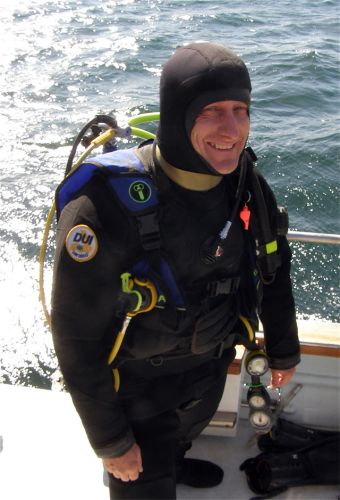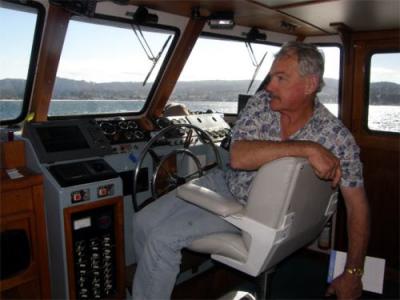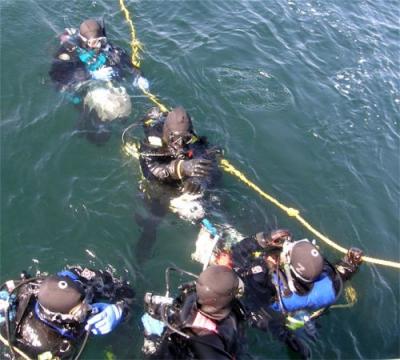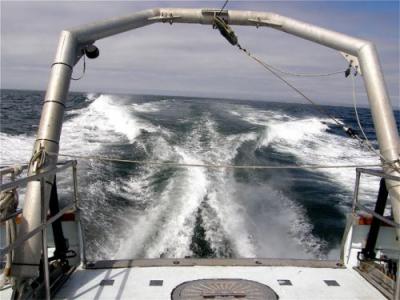"There is NOTHING--absolutely nothing--half so much worth doing as simply messing about in boats" is a lovely quote from "The Wind in the Willows" by Kenneth Grahame. I have always loved boats and being on the water, and if you become a captain of a boat, or an oceanographer, marine biologist, or fisherman, you can spend a lot of time on boats.
Most SCUBA (self-contained underwater breathing apparatus) divers use boats to get them to where they are going to dive. When we are in Antarctica, maybe we will take a snowmobile to our dive site, but here we use a boat!

Bob is ready to dive into Monterey Bay!
The SCINI team travelled out into Monterey Bay on the R/V (Research Vessel) John H. Martin with Captain Lee Bradford.

Captain Lee Bradfod pilots the R/V John H. Martin
The John H. Martin is named after a past Director of Moss Landing Marine laboratories. Dr. Martin's research focused on the effects of trace metals on phytoplankton.
What are trace metals? Metals that occur in small amounts in ocean water. Often these are dissolved as "ions" (charged particles that dissolve in water) and then ocean organisms can ingest them.
What is phytoplankton? Phytoplankton are microscopic (tiny) unicellular (one cell big) plants that drift in the surface of the ocean gathering sunlight and nutrients to photosynthesize and grow. Phyto = plant and planktos = floating

The divers are safely back together after their dive.
The yellow cord attaches to the R/V John H. Martin.
After the divers are safely back we head back into Moss Landing.

The view from the stern of the boat!
Now, it is time to leave Moss Landing, California and head home to Flagstaff, Arizona to teach my classes more about the SCINI Project.

